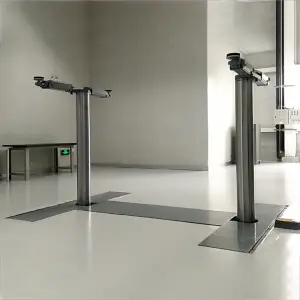Cylinders are ubiquitous shapes that we encounter daily in various forms and functions. From the sleek designs of engineering marvels to the simplicity of everyday objects, cylinders play an integral role in our understanding of geometry, physics, and engineering. A cylinder, by definition, is a three-dimensional geometric shape with two parallel circular bases connected by a curved surface. This unique construction allows cylinders to possess diverse characteristics and applications across numerous fields, including industries such as manufacturing, architecture, and transportation. In this article, we will delve into the various aspects of cylinders, including their geometric properties, engineering implications, and real-world applications.
Understanding Cylinder Geometry
The fundamental geometric properties of a cylinder are simple yet profound. A right circular cylinder has a defined radius (r), a height (h), and is characterized by its circular bases that face the same direction and are aligned perfectly. The volume (V) of a cylinder can be calculated using the formula:
\[ V = \pi r^2 h \]
where π (pi) is a mathematical constant approximately equal to 3.14159. The surface area (A) of a cylinder consists of the areas of its two circular bases plus the area of its curved surface, which can be calculated using the formula:
\[ A = 2\pi r(h + r) \]
This shows that the design and construction of cylinders are deeply rooted in mathematical principles, making them essential topics in both geometry and physics.

Exploring the Fascinating World of Cylinders: From Geometry and Engineering to Everyday Applications
The characteristics of cylinders extend beyond mere geometry. They exhibit unique properties such as rotational symmetry and uniform cross-sections, which make them ideal candidates for various engineering and architectural applications. For instance, the even distribution of weight across a cylindrical shape provides stability in structures like silos, storage tanks, and bridges.
Cylinders in Engineering
In the realm of engineering, cylinders find extensive use in a multitude of applications due to their mechanical properties. One of the most common uses of cylindrical shapes is in the design of pipes and tubes, which are crucial for fluid transportation in industries ranging from oil and gas to water supply systems. The strength and durability of cylindrical pipes allow them to withstand high pressures and force, making them indispensable in infrastructure development.
Moreover, the principles of cylinder design are applied in engine construction, specifically in internal combustion engines, where cylindrical pistons move within cylindrical chambers, converting fuel into mechanical energy. The efficient operation of such engines depends heavily on the precise engineering of these cylinders to minimize friction and maximize performance.

Exploring the Fascinating World of Cylinders: From Geometry and Engineering to Everyday Applications
Hydraulic cylinders are another prominent example in engineering. They leverage the hydraulic principle of incompressible fluids to produce linear motion, serving various functions in machinery, from construction equipment to manufacturing assembly lines. The advancements in materials and engineering technologies have allowed the creation of increasingly smaller and stronger hydraulic cylinders, enhancing their performance and applicability.
Everyday Uses of Cylinders
Beyond the realm of engineering and geometry, cylinders have an array of applications in our daily lives. Think of everything from food containers to beverage cans and even batteries—cylindrical shapes dominate many of the products we routinely use. For instance, aluminum cans are engineered with cylindrical shapes to maximize storage space while minimizing material usage. This efficient design also facilitates the canning process, extending the shelf life of products.
In addition, the design of cookware, such as pots and pans, often incorporates cylindrical shapes for optimal heat distribution. The round bases of these cooking devices ensure even heating and prevent hot spots, thus enhancing cooking efficiency.

Exploring the Fascinating World of Cylinders: From Geometry and Engineering to Everyday Applications
Moreover, lifestyle products, such as water bottles, shaving cream cans, and various toiletries, frequently employ cylindrical shapes for improved ergonomics and aesthetic appeal. The cylindrical design not only enhances user experience but also aligns with the principles of effective packaging, which prioritize accessibility and convenience.
Conclusion
In conclusion, the exploration of cylinders reveals their significance across various disciplines, from the intricate principles of geometry and engineering to their pervasive presence in our everyday lives. Their uniformity, strength, and efficiency make them indispensable in numerous applications, demonstrating the profound relationship between mathematics and the physical world. As we continue to innovate and develop new technologies, understanding the fundamental principles behind these shapes will remain crucial to addressing the challenges of the future. Whether through improving existing designs or creating groundbreaking products, the cylindrical shape is a powerful example of how geometry influences our lives on both practical and conceptual levels.car quick lift



